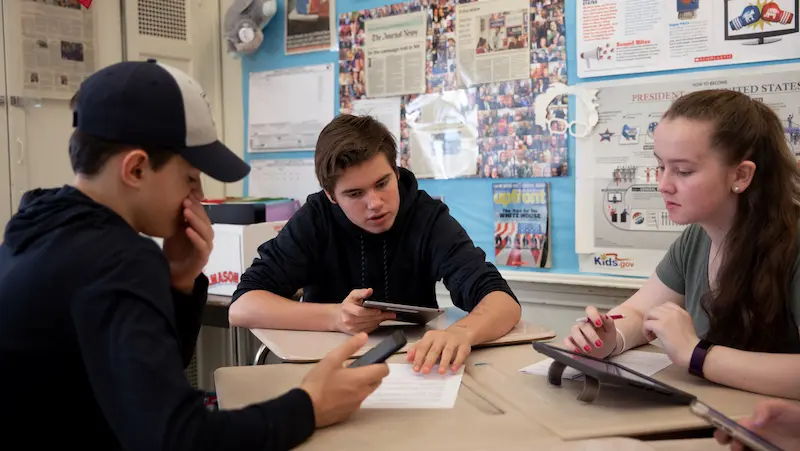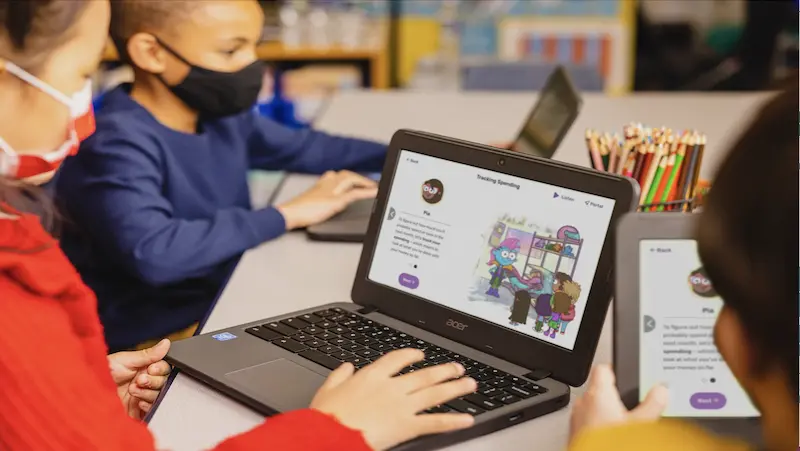In today’s ever-evolving financial landscape, the significance of instilling financial literacy in our youngest learners cannot be overstated. Just as we teach them the basics of reading, writing, and arithmetic, providing elementary school students with a foundation in financial knowledge equips them with essential life skills. Understanding the value of money, budgeting, and making informed financial decisions from an early age empowers these young minds to navigate the complexities of the modern world with confidence and foresight. Financial literacy isn’t just about dollars and cents; it’s an investment in our children’s future, fostering responsible, informed, and financially capable citizens.
Table of contents
Understanding the Audience
Imagine embarking on a thrilling adventure, only to realize that the map is written in a language you’ve never encountered. Frustrating, right? Now, picture a classroom where the curriculum doesn’t resonate with the learners’ comprehension levels. This mismatch isn’t merely inconvenient; it’s a roadblock to meaningful learning.
Tailoring the curriculum to suit the comprehension levels of our audience is akin to crafting a personalized key for each learner—a key that unlocks the door to understanding, engagement, and genuine knowledge acquisition. Here’s why it matters:

1. Individualized Learning Journeys
Just as a one-size-fits-all approach to clothing falls short, so does a uniform curriculum. Recognizing and respecting the unique cognitive profiles of our students allows us to cater to their individual learning needs. By doing so, we empower each learner to navigate their own educational journey, ensuring no one is left behind.
2. Fostering Engagement
Ever tried listening to a speech in a language you barely understand? It’s easy to drift away, isn’t it? Similarly, an educational experience that is too advanced or, conversely, too basic for the audience can lead to disengagement. Tailoring the curriculum ensures that learners are neither overwhelmed nor underwhelmed, but rather, fully engaged in the learning process.
3. Building Confidence
Success breeds confidence. When learners can grasp and apply the material at their own pace, confidence blossoms. A well-fitted curriculum nurtures a positive learning environment, empowering students to believe in their abilities and embrace challenges with resilience.
4. Real-World Relevance
Imagine learning to swim through textbooks alone, without ever dipping a toe in the water. Understanding the audience allows educators to bridge the gap between theory and real-world application. A tailored curriculum incorporates practical examples that resonate with the learners, making education a meaningful and applicable experience.
Identifying Key Financial Concepts
Hey there, young minds! Today, we’re diving into the exciting world of money management activities for youth and finance. Yep, you heard it right—finance isn’t just for grown-ups! Even you, our elementary rockstars, can start building a foundation for a bright financial future. Let’s explore some key financial concepts that are like the ABCs of money:

1. Saving:
Think of saving as your superhero power. It’s like collecting coins in your piggy bank. When you save, you’re putting money aside for something special in the future, like that super cool toy or a fantastic adventure.
2. Budgeting:
Budgeting is a bit like planning your own awesome party. You decide how much you can spend on treats, toys, and games. This way, you make sure you have enough for everything without running out of money before the fun is over.
3. Needs vs. Wants:
Imagine you have a magical backpack with limited space. Needs are like the must-haves that go in first—food, clothes, and a cozy bed. Wants are the extra fun stuff, like a new video game or a sparkly bracelet. It’s essential to know the difference so your magical backpack stays balanced.
4. Earning:
Earning is like unlocking achievements in a game. When you help with chores or do something extra special, you earn a little extra cash. It’s your way of leveling up in the real world!
5. Sharing and Giving:
Just like trading cards with friends, sharing and giving are important parts of the money game. Whether it’s donating to a cause you care about or sharing a treat with a friend, it makes the world a better place.
6. Investing (the fun way):
Investing might sound like a grown-up word, but it’s like planting seeds in a garden. You put a little bit in, and over time, it grows into something bigger. Maybe it’s a fund for a big dream, like becoming an astronaut or opening a cupcake shop!
Interactive Learning Methods

Games That Teach:
Imagine learning about the stock market through a thrilling board game or exploring the nuances of budgeting through a strategic card game. Games have a unique ability to turn mundane topics into exciting challenges. By incorporating elements of competition and strategy, students not only grasp financial planning for kids concepts more effectively but also develop crucial decision-making skills in a risk-free environment.
Storytelling for Financial Literacy:
Numbers and charts might make some people’s eyes glaze over, but stories have an uncanny ability to captivate. Weaving financial lessons into narratives can make the subject matter relatable and memorable. Imagine unraveling the mysteries of personal finance through the journey of relatable characters facing real-life financial dilemmas. This approach not only demystifies complex concepts but also fosters a deeper understanding of the real-world applications of financial literacy projects.
Role-Playing Real-Life Scenarios:
Enter the world of role-playing, where students don’t just learn about financial decisions; they live them. By assigning roles such as a young entrepreneur or a savvy investor, learners can step into the shoes of different personas and navigate through real-life financial scenarios. This hands-on approach allows for a more immersive learning experience, enabling students to apply theoretical knowledge to practical situations.
Beyond the Classroom:
Interactive learning money activities methods extend beyond the four walls of the classroom. Online simulations, financial apps, and financial games for students provide accessible platforms for learners to experiment with managing money in a virtual setting. These tools empower individuals to make mistakes, learn from them, and refine their financial decision-making skills in a safe and controlled environment.
Collaboration with Educators and Parents

The Classroom Foundation:
Teachers are the architects of a solid intro to financial literacy foundation. They introduce concepts like budgeting, saving, and the importance of responsible spending. In their capable hands, students gain insights that extend far beyond textbook theories. Practical applications and real-world scenarios make these lesson plans on money resonate, setting the stage for a lifelong understanding of financial principles.
Extending Learning Beyond School Walls:
However, the learning journey doesn’t stop at the school gate. Parents are the co-authors of this financial narrative, responsible for bringing these teachings to life. By engaging with their children on the topics covered in class, parents provide the necessary continuity, making sure the lessons aren’t confined to the school desk but seamlessly integrated into daily life.
Reinforcing Values at Home:
The home environment is a potent setting for reinforcing values. Parents, as the primary influencers, have the power to shape attitudes towards money. By setting a positive example through responsible financial habits, they contribute significantly to the formation of a financially literate mindset in their children.
Communication is Key:
A harmonious partnership between educators and parents requires open communication. Regular updates from teachers on classroom progress and topics covered empower parents to align their efforts at home. Likewise, parents can offer valuable insights into their child’s learning style, enabling teachers to tailor their approaches for maximum impact.
Assessing Progress and Adjusting the Curriculum

In the dynamic realm of education, the compass guiding effective teaching is none other than regular assessments. These checkpoints along the learning journey serve as beacons, illuminating the understanding of students and providing invaluable insights for educators.
Assessments are not just about ticking boxes; they’re about understanding. In a classroom, they play the role of a conversation between the teacher and the students. A conversation that goes beyond words, into the realm of comprehension and application.
Imagine embarking on a road trip without a map or milestones to measure progress. Similarly, in the academic journey, assessments act as road signs, helping students and teachers track how far they’ve come and what lies ahead. It’s not about the pressure of a final destination but about appreciating the scenery along the way.
When we assess regularly, we’re not just evaluating students; we’re tuning into their learning frequencies. Are they getting the melody of the lesson, or is there static interfering with their comprehension? Assessments provide the answer, helping teachers fine-tune their teaching methods to ensure every student is in harmony with the curriculum.
Adjusting the curriculum isn’t about rewriting the script; it’s about orchestrating a symphony that resonates with diverse learners. Assessments offer a backstage pass, allowing educators to witness firsthand how students interact with the material. This insight empowers teachers to make the necessary adjustments, tailoring the curriculum to the unique needs and learning about finances styles of their students.
In this dance between assessments and adjustments, the curriculum becomes a living, breathing entity, evolving with the needs of the learners. It’s not a rigid structure but a flexible framework that adapts to the rhythm of understanding.
Conclusion:
In conclusion, instilling financial education in the formative years of elementary students is paramount. A thoughtfully crafted curriculum not only imparts fiscal knowledge but serves as a catalyst for empowerment. By equipping young minds with financial literacy events, we not only prepare them for future economic challenges but also foster a generation capable of making informed and responsible choices, ensuring a more secure and prosperous society.
To get your hands on more educational and free resources on coding for kids, robotics for kids, financial education for kids, etc., do check out the BrightCHAMPS Page now!
To get your hands on more such articles, educational content, and free resources on coding for kids, robotics courses, game development, etc., check out the BrightCHAMPS Blog Page now!
Frequently Asked Questions
A1. Early exposure to financial literacy cultivates responsible money habits, empowering kids with essential life skills for informed decision-making and future financial independence.
A2. Interactive tools like “Piggy Bank Adventures” and storybooks such as “Benny’s Pennies” are great for introducing basic financial concepts in a fun and relatable way.
A3. Parents can reinforce lessons through activities like setting up a mock store at home, involving kids in budgeting for family activities, and discussing everyday financial decisions openly.
A4. Trips to the grocery store, simple budgeting exercises with allowances, and discussions about saving for a desired toy can turn abstract concepts into practical, relatable lessons.
A5. Numerous studies highlight improved financial decision-making skills and increased savings habits among individuals who received early financial education, paving the way for a more secure financial future.


 We are an army of educators and passionate learners from BrightChamps family, committed to providing free learning resources to kids, parents & students.
We are an army of educators and passionate learners from BrightChamps family, committed to providing free learning resources to kids, parents & students.














